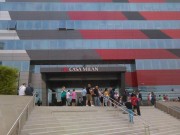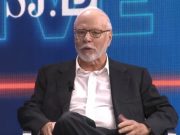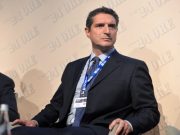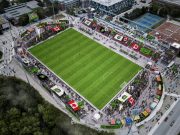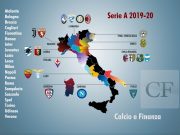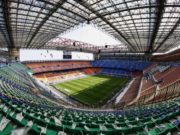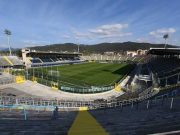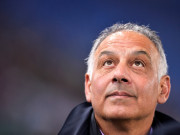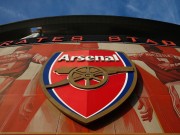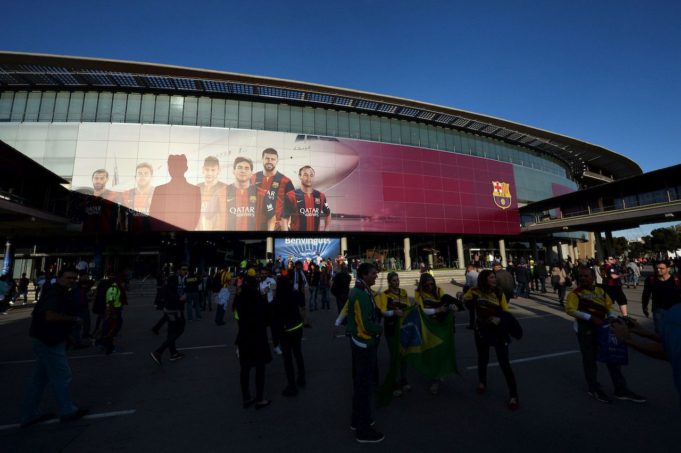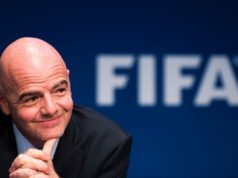The members and members’ representatives invited to the Ordinary General Assembly on Sunday 17 October, which was suspended and postponed until Saturday 23 October, have to decide whether to give the green light to the Espai Barça financial plan, a project described by vice-president Elena Fort in her presentation at the Palau Blaugrana as “most important project for the present and the future of the club.”
The modernisation of the Club’s sporting facilities is a crucial project, but one that comes more than 15 years too late, and is now of unavoidable urgency for the future feasibility of Barça. Most of the club’s biggest competitors around Europe already have state-of-the-art stadiums or they are under construction. It is a vital project necessary to reflate the Club’s finances and maintain Barça at the forefront of world sport because only with facilities worthy of a Club like FC Barcelona can the organisation compete financially and on the field with their European competitors.
Espai Barça continues to be an unfulfilled dream after the members approved the project to remodel Camp Nou, build a new Palau Blaugrana, a new MiniEstadi (the current Estadi Johan Cruyff) and a Campus Barça to integrate the blaugrana facilities into the Les Corts neighbourhood and the city of Barcelona in a referendum in 2014. Seven years later the Club has invested 145 million euros and only carried out 5% of the project, which has become outdated in financial terms (the budget of 600 million euros is completely undervalued), in the social aspect (more than 12,500 members with season tickets were affected by a change from the first tier to the third tier) and in terms of the schedule (the project should have been completed in 2021).
As time has gone by the Espai Barça project as it is has become outdated because it does not take into account the latest technology and sustainability necessary for the project to remain relevant and become a legacy for future generations. It is for that reason that the Board of Directors is redefining the project and improving it to fit in with the current situation, make it viable and sustainable financially and to make it the biggest and most innovation sports and entertainment space within a European city.
HOW WILL THE NEW ESPAI BARÇA BE BETTER?
The new Espai Barça puts forward a new concept for the facilities (Camp Nou, Palau Blaugrana) and Campus Barça (esplanade and annexing buildings), transforming the Club’s assets and environment into a new integrated Barça experience open to the city.
- Correct the budget adapting it to reality
- Avoid 12,500 season ticket holders from the first tier moving to the third
- Improve security, accessibility and comfort at Camp Nou and the Palau
- Build Campus Barça which will be a leader in sustainability and include a better use of energy and photovoltaic panels to create electricity, geothermal energy and collected rain water.
- A commitment to investment in the project to make it a leader in terms of techology.
- More green spaces.
- More VIP spaces and events to generate the income that the Club needs.
THE MAIN CHANGES AT CAMP NOU
The new Espai Barça project will retain its open, Mediterranean character with wide terraces that are typical of the Nikken Sekkei construction project, the Japanese studio that came out as winner in the international architecture competition. However, the project will also incorporate new improvement to maximise its economic potential and above all minimize the effects on season ticket holding members as well as bringing the project up to date in terms of innovation, technology, sustainability and accessibility which in turn will inevitably drive-up costs if it is to be a latest generation stadium built for the future.
- The first tier structure will not be modified: With the new proposal a new first tier is not to be built therefore members will not have to move as they would in the previous project if they do not wise to do so. The first tier will be a optimised thanks to access from floor 1 and the exits for seats.
- A new third tier is proposed: It will allow better accessibility, greater comfort, better operational and functional distribution and have greater space for members and the Club. It also allows the concentration of VIP areas rather than have them distributed around the stadium, minimizing the effect on members.
- New seats and space for members: With the revised plan the capacity of 105,000 is maintained and there will be room for members who find themselves on the waiting list. Members will have more creature comforts and a covered roof.
- Double VIP ring between the second and third tiers: The VIP ring in the first tier will be placed higher up between the second and third tiers via an independent double ring that will increase considerably the capacity of the VIP boxes and will lead to greater income to help finance the project.
- Sustainability, in the stadium’s DNA: The new project has to have sustainability as one of its priorities to convert the new Camp Nou into a leader in its field. The revised plan sees a commitment to more bicycles and less cars and motor bikes. It is also being valued to build more parking space under the future Camp Nou and Palau Blaugrana is also being looked at. More electric plaques are also being looked at for the parking areas to help promote sustainable mobility.
- New roof: The covering will change with regards to the previous project to incorporate more elements to aid sustainability such as a geothermal system, ‘District Heating & Cooling’, and the roof will be covered with 30,000m2 of solar panels to generate photovoltaic energy.
- Latest generation technology: The future Camp Nou will be a stadium that incorporate the latest technology on offer in the market, an example being the incorporation of a 360º screen in the interior of the ‘bowl’ which will offer the public a new experience, the security system and vehicle access will be improved and the possibilities also offered by 5G connectivity will also be exploited.
- The time frame for the work will be cut: If members approve the new financing at the Assembly, at the start of 2022 approval for the project would be available and work could start in the summer of the same year with the aim to finish by the end of 2025.
A MULTIFUNCTIONAL PALAU BLAUGRANA FOR 15,000 SPECTATORS
The new Palau Blaugrana in theory would maintain a large part of the external design with the objective to raise capacity from 10,000 to 15,000 seats and adapt it to the realities of professional sport and make it a leading venue. Focus would be placed on making it a flexible venue, combining sporting events with cultural events to obtain a new source of income. The new project would keep the Petit Palau and the Ice Rink as well as the parking area for coaches.
CAMPUS BARÇA, A SPACE FOR SPORT AND ENTERTAINMENT
The new project maintains the integration of Campus Barça into the neighbourhood with an open space, without barriers which will be a new focus of attraction for the city, incorporating a new concept of making the most of the space to create a park with new sporting and entertainment experiences. The members and visitors will be able to enjoy a unique experience at Campus Barça which will be a green space for meeting up with activities, sports circuits, areas for children and for visitors and neighbours.
The main change is that the so called ‘diamonds’ will disappear to place more emphasis on the green areas in the square, and the incorporation of a welcome ‘Hub’ within the main stand in the stadium. Inside the ‘Hub’ there will be a Barça Store with 2,500m2 of commercial floorspace and the Museum which will have some 3,000m2 of floorspace and will offer visitors new experiences as well as the traditional trophies.
In the Campus a ‘Barça Hall of Fame’ will also be included. The new project also plans the incorporation of the La Masia de Can Planes, the home of the former La Masia, within the Campus.
HOW WILL IT BE FINANCED
As the Club’s CEO Ferran Reverter explained to the representatives, the new Espai Barça will finance itself based on the additional revenue that the new project will provide thanks to new boxes and VIP seats, new operating spaces, new sponsors and the exploitation of new assets generated by Espai Barça itself. This financing plan is guaranteed by the increases in revenue generated by the new Espai Barça once it is completed, estimated at 200 million euros a year. Therefore, the project will not cost the members any money, jeopardise the club’s assets or put its sporting endeavours at risk. Since the payment is based on additional revenue, the returns do not affect ordinary management.
Investment of 1,500 million euros with market interest and a return over 35 years
The financing operation that the club will ask authorisation for from the Assembly will be negotiated through international operators with expertise in the financing of sports stadiums and facilities involves an estimated investment of up to 1.5 billion euros, will have a market interest rate and a return at 35 years, with a five-year grace period, while the stadium is being renovated. These 1.5 billion will be distributed as 900 million for the future Camp Nou, 420 million for the new Palau Blaugrana, 100 million for the development of the environs and the Barça Campus, 60 million for investments agreed to in the MPGM (Modification of the General Metropolitan Plan) and 20 million for possible improvements to the Estadi Johan Cruyff.
Ferran Reverter considers “this project is not only necessary, but it is essential to maintain competitiveness in sports and economics in the future,” and he insists that the 1,500 million euros needed for investment to make the Espai Barça happen is a figure in line with the realities of the market and the necessities of the project and that it cannot be considered a debt or cost, but an investment for the future of which the Club will derive great benefits to grow and to continue to lead in the sports industry. “In recent years Barça has not invested, and not investing is impoverishing. When one invests, it generates a very quick profit. I think this has been a bold move by this Board, but we need a future.”



